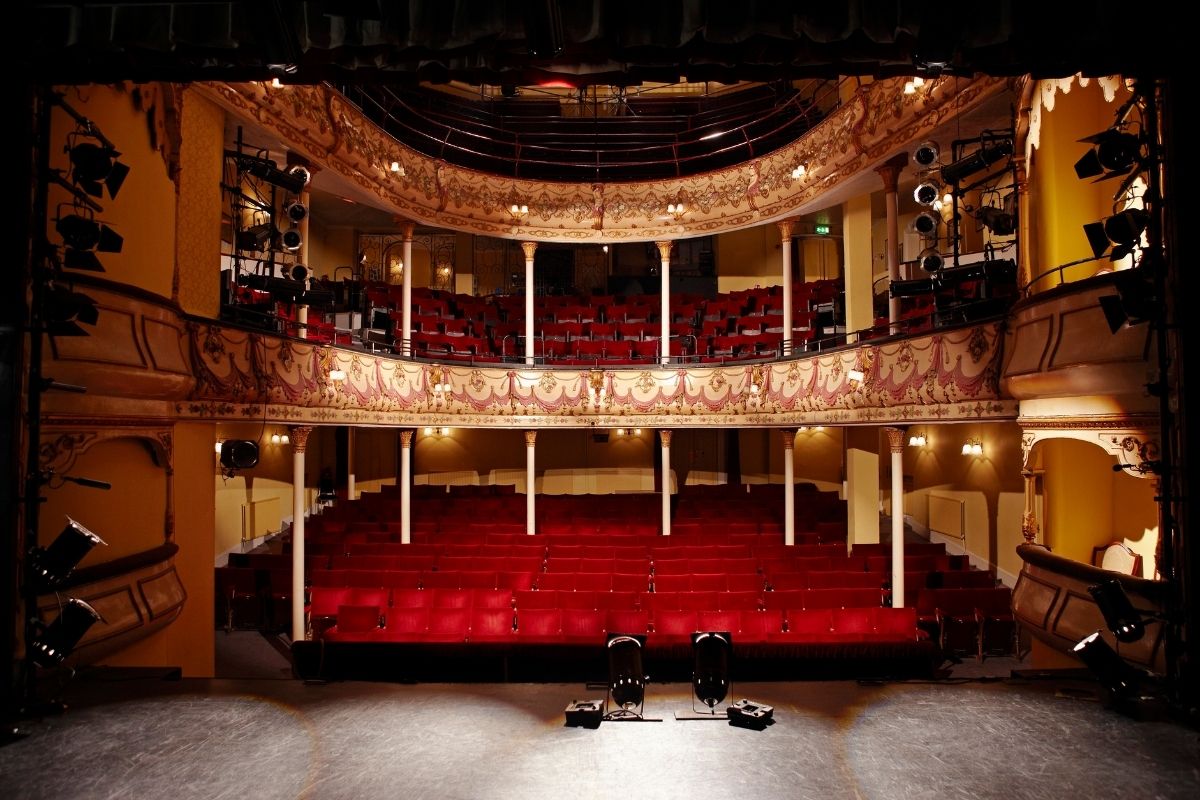Performing Arts Can Take Place Almost Anywhere

Where does performing arts work happen? There’s a traditional, expected framework, particularly at this moment, that theater happens inside a theater. This idea is especially common in Europe and the Americas. You sit in a chair, and there’s a stage. It’s usually a proscenium stage, which means that there’s an imaginary fourth wall and the audience witnesses a kind of expected tradition.
In your performing arts education, you’ll learn that this inheritance has been disrupted in a lot of ways. For example, you may have experienced theater in the round or theater where you’re sitting on two sides of the stage or there are other configurations of the room. But the room is still localized in a theater.
Ruben Polendo points out that “there’s another kind of work that’s important, as it speaks to location. And it’s the idea of site-specific work.” Intended to disrupt the expectation that work happens in a theater, the idea of site-specific work is that theater work can happen anywhere, Polendo explains. “You can actually identify the site, so it can happen in the forest, in a park, in an abandoned bank. It can happen on a riverbed; it can happen in a lot of places.” So, the site becomes a key factor in the performance.
Immersive theater is a third type that’s important to understand in online performing arts education. Although the language for this has just become important recently, the style has been part of artistic practice for a very long time. Polendo views immersive theater as somewhat in line with the site-specific variety. “It often happens in unexpected places, though it has certainly happened in theaters,” he observes. “The idea is that you’re no longer bound to a sitting configuration, but actually you are immersed in the world of the piece. You’re actually surrounded by it … and your experience is now fully experiential. This is a very exciting kind of work to do.”
Harvey Young agrees. “There’s a liveness factor that is powerful. It’s worth celebrating,” he says. “And so I would say to anyone who is anxious or more concerned about going to the theater, ‘Don’t be.'” He adds that what’s wonderful about American theater is that it really aims to reach the people.
Young offers a case in point: When Amiri Baraka did “Dutchman,” it premiered in Greenwich Village. It drew an art crowd, the generation crowd of the time in the early 1960s. Baraka’s reaction was like, “‘No, no, no, I appreciate that crowd as well, but my people are up in Harlem.’ So he took the exact same production, and he moved it up to Harlem on the streets, and he did it at a street-corner theater.”
That made a huge difference across New York City, Young explains, “because now you had people across the entire island of Manhattan thinking about and living and inhabiting this play. So, that’s what you want. You want theater to be alive.
“A lot of people want to know what it takes to create theater and to start a theater company or put on a play for the first time. It sounds taxing at first. It sounds really difficult. Do I need to get a choreographer? Do I need to rent out a theater, an auditorium?”
Young downplays those concerns. “It’s not that big of a deal. All you need to create theater is a performer, a performer who is willing to perform in front of someone else,” he says, adding, “The basic definition of theater is someone performing before another person. It’s witnessed; it’s audienced. It’s two people sharing space together — one as witness, one as performer.”
As Polendo sees it, “One of the things that makes theater-making so exciting to me is that one of the responsibilities is not only that it’s live, but that it’s actually live in the sense that it’s constantly developing, that it’s consciously taking shape and constantly speaking to its time and of its time.”
Over time in history, Polendo notes, you see all sorts of cultures do exactly that, shaping theater into spaces of ritual or performance. They shape it into spaces where text is important or physicality is important.
“What’s exciting to me is that there is no trajectory of how theater develops,” Polendo says. “There’s this incredible map, and that map has to do with ideas and exchanges and migrations, and it’s there that theater comes alive.” He concludes, “If you want to think of the history of theater, don’t think of a line of theater developing, but think of this incredible map that’s coming from all sorts of directions.”


